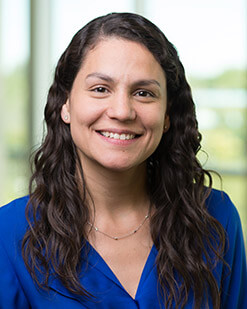Immune Deficiency and Immune Dysregulation Disorders
This information was reviewed and approved by Jessica Galant-Swafford, MD (1/31/2022).
The immune system is complex; it both protects the body from infection and must be tightly regulated so it does not attack the body. When the immune system cannot protect the body from infection as well as it should, the immune system is considered deficient. When the immune system incorrectly attacks one’s own organs and tissues, this is called autoimmunity. The term immune dysregulation refers to individuals who may have both of these problems.
In some cases, an immune disorder is present at the time of birth and persists throughout life. This is called a “primary” immunodeficiency or an inborn error of immunity because the disorder is considered to be genetic. Primary immunodeficiencies are often diagnosed in childhood, but with advances in genetic and immune system testing also can be diagnosed in adulthood.
In other cases, an immune disorder can be secondary. This means that it is caused by another health problem or due to the treatment for that health problem. For example, secondary immunodeficiencies can be caused by infection (such as HIV) and cancer, particularly blood cancers like leukemia and multiple myeloma. The most common cause of secondary immunodeficiency is medications, including chemotherapy and immunosuppressants that purposefully turn down parts of the immune system to treat the underlying disease such as cancer or autoimmune disease.
Each type of immune system disorder is different, and not all immune disorders are treated in the same way. It is important to find out as much as possible about your specific immune disorder to understand the types of symptoms you may be more susceptible to getting. You and your doctor can work together to prevent the consequences of immune disorders.
How the Immune System Works
The immune system normally protects your health by recognizing “foreign invaders” like bacteria, viruses, parasites and fungi and then figures out a way to remove them from the body. The immune system isn’t located in just one part of the body. The cells of the immune system can move around to anywhere in the body. Some of the places where immune cells are present in high numbers include the thymus, liver, bone marrow, tonsils, lymph nodes, spleen and blood. These places in the body help make, store and transport the cells and proteins that fight foreign invaders.
The major cells and proteins of the immune system are:
- B-cells (also called B-lymphocytes)
- Antibodies — made by certain B-cells called plasma cells
- T-cells (also called T-lymphocytes)
- Phagocytes
- Complement
- Antigen Presenting Cells
- Natural Killer Cells
B-Cells and Antibodies
Antibodies, also called immunoglobulins, are produced by a type of B-cell called a plasma cell. Antibodies travel around the body surrounding and coating foreign invaders, signaling them for destruction. This weakens the invader cells.
There are four main different types of antibodies: IgM, IgG, IgA and IgE. IgM antibodies travel to the site of infection when it first begins. They are a strong activator of complement proteins that coat bacteria and signal other cells to come destroy it. IgG antibodies are the most common antibody found in the blood. By binding to viruses, bacteria and fungi, IgG protects the body from infection. IgA antibodies are found in secretions like tears, saliva, mucus and gastric juices and are considered one of the first lines of defense from foreign organisms. IgE binds to foreign invaders such as parasites and also plays a role in allergic diseases and asthma.
All B-cells have a receptor on their surface that binds to foreign particles. B-cells that have receptors that bind to proteins of the human body are usually eliminated during B-cell development. When they are not eliminated, however, autoimmune disease can occur.
Another type of B-cell is called a memory B-cell. When people have an infection, the immune system remembers this. Later, if the person is infected with that same organism, memory B-cells for that exact invader are activated, and the immune response is much stronger than it was the first time. This is the principle behind vaccination. Vaccination enables the body to make memory B-cells specific for an invader. Especially in cases where the natural infection is too dangerous (e.g., polio, tetanus), the body can mount a strong immune response if it encounters that invader, even though the person has not had the infection before.
T-Cells
There are three major kinds of T-cells. Helper T-cells bind to pieces of foreign invaders after they have been broken down by antigen presenting cells. This allows them to “help” B-cells by increasing the strength of the immune response. Killer T-cells attack foreign invaders by releasing toxic chemicals that destroy them. Regulatory T-cells tell the immune system that something should be ignored, like your own body parts, helping to prevent autoimmune disease.
Phagocytes
Phagocytes are a type of white blood cell that uses a process called phagocytosis to ingest bacteria, foreign particles and dying cells to protect the body. There are three main groups of phagocytes: monocytes and macrophages, granulocytes such as neutrophils, and dendritic cells. Some phagocytes are located in the blood and some are found in tissues such as your skin, stomach and lungs. After a phagocyte engulfs a foreign particle, it fuses with a cell called a lysosome and forms a phagolysosome. Once the phagolysosome forms, the acidic environment is the ideal environment for proteins called enzymes to degrade and kill the foreign invaders. Also, within the phagolysosome, the release of reactive oxygen species and hydrogen peroxide neutralizes microbes.
Complement
The complement system is made up of 18 proteins in the blood that are named because they enhance (complement) the ability of antibodies and phagocytes to clear microbes and damaged cells. The presence of foreign invaders and antibodies tells complement to begin its work. Like antibodies, complement coats foreign invaders so that they are easier for phagocytes to kill and eat. Multiple members of the complement system can come together to form a “membrane attack complex” that ruptures the surrounding protective cell wall of bacteria, thereby killing it. Complement also promotes inflammation by recruiting phagocytes when more are needed.
B-cells, T-cells, phagocytes, antibodies and complement all work together in a complex system to protect us. That’s what makes the immune system a system.
Our Specialists
-

Rafeul Alam, MD, PhD
-

Mark Boguniewicz, MD
-

Jordan Bull, PA-C
-

Flavia Cecilia Lega Hoyte, MD
-

Rohit K. Katial, MD
-

Kanao Otsu, MD, MPH
 Clinical Trials
Clinical Trials
For more than 100 years, National Jewish Health has been committed to finding new treatments and cures for diseases. Search our clinical trials.
